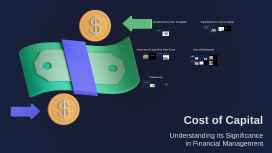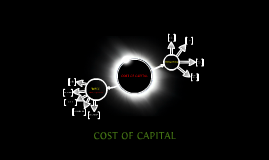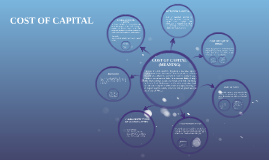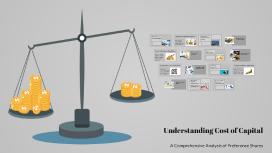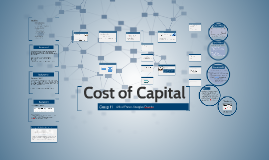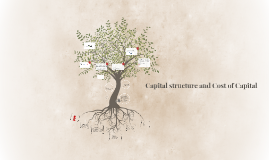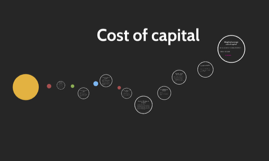Cost of Capital
Transcript: Significance of Cost of Capital Overview of Preference Share Capital Definition of Cost of Capital Characteristics of Preference Shares The cost of capital is a critical measure for evaluating investment opportunities and guiding corporate finance decisions. A company with a lower cost of capital can undertake more projects, increasing its profitability and market value over time. Preference shares represent a hybrid equity instrument that combines features of both equity and debt. They typically pay dividends at a fixed rate and may have redeemable or irredeemable characteristics, influencing their risk and return profiles. Preference share capital represents a hybrid form of financing that provides a fixed dividend to shareholders before common shareholders receive any dividends. This type of capital can be categorized into irredeemable and redeemable preference shares, each with distinct characteristics and implications. Cost of capital refers to the minimum return that a company must earn on its investments to satisfy its investors. It includes the cost of equity, debt, and preference shares, providing a comprehensive overview of what the company needs to generate to maintain its value. Priority of Preference Shareholders Cost of Irredeemable Preference Shares Treatment of Dividends Formula for Irredeemable Preference Shares Preference shareholders have a superior claim on assets and dividends over ordinary equity shareholders. In the event of liquidation, they are paid before common shareholders, making them less risky but potential returns lower compared to ordinary shares. Dividends paid to preference shareholders are considered an appropriation of after-tax profits, not an expense. This treatment means these payments do not reduce the company’s tax liability, impacting overall financial strategy. The cost of irredeemable preference shares is akin to calculating perpetuity. It represents dividends paid to shareholders without a redemption feature, making it a key financial metric for investors seeking stable income. The formula for calculating the cost of irredeemable preference shares (Kp) is Kp = PD / Po, where PD stands for annual preference dividend and Po represents the net proceeds from the issue. Example Calculation - Irredeemable Example Calculation - Redeemable Formula for Redeemable Preference Shares Cost of Redeemable Preference Shares For redeemable preference shares with an annual dividend (PD) of $6, a redemption value (RV) of $100, net proceeds (NP) of $90, and remaining life (n) of 5 years, the cost is Kp = 6 + (100 - 90) / 5 / ((100 + 90) / 2) = 7.23%. If a company pays an annual preference dividend (PD) of $5 and the net proceeds from issuing the shares (Po) is $50, the cost of irredeemable preference shares would be Kp = 5 / 50 = 0.10 or 10%. Redeemable preference shares offer an expected return through dividends and a redemption value at maturity. Their cost is essential for assessing the overall expense of capital financing for companies. The cost of redeemable preference shares (Kp) is calculated with Kp = PD + (RV - NP) / n / ((RV + NP) / 2), where RV is redemption value, NP is net proceeds, and n is the remaining life of shares. Importance in Financial Decision Making Future Trends in Preference Capital Financing Summary of Key Points Preference shares are crucial in corporate financing, providing fixed dividends and priority over equity dividends. The cost of irredeemable and redeemable preference shares influences a company’s overall cost of capital and strategic financial planning. Understanding the cost of capital, particularly preference shares, enables firms to evaluate investment projects accurately. It impacts decision-making regarding financing strategies, capital structure, and overall financial health. The trend towards hybrid financing structures includes increasing reliance on preference shares. Advances in finance technology may streamline the issuance and management of these securities, responding to market demands for flexibility and lower costs. Understanding Cost of Capital A Comprehensive Analysis of Preference Shares






